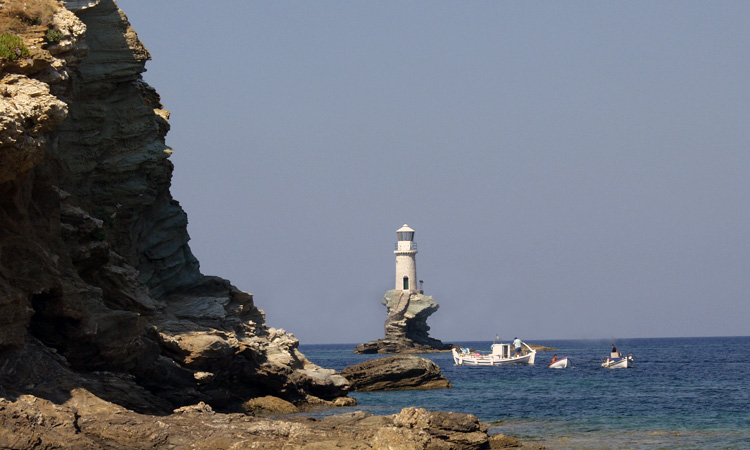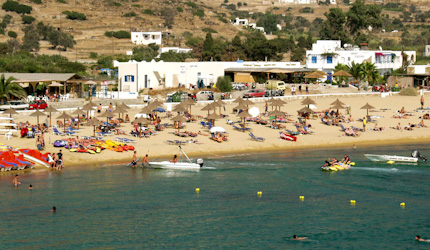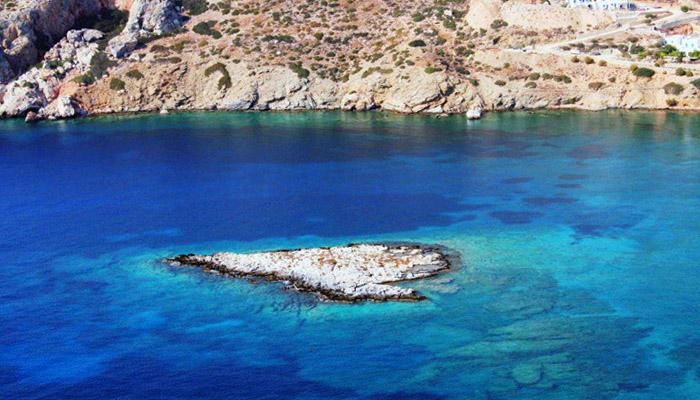Thirasia is the largest volcanic island near Santorini, only 1 mile from Oia. It was excised by the west coast of Santorini after the earthquake and the volcanic eruption in 1500 BC. You can reach it by caique either from the port of Ammoudi to the port of Manolas in Korfos or by ferry boat from Athinios to Riva, the port of Thirassia.
The architecture of the houses and churches, the cave houses and the whitewashed buildings, low vegetation and turquoise waters remind of the bigger island of Santorini right opposite. But Thirasia remains untouched and has kept its traditional character, consisting a small tranquil paradise for those who want to enjoy a peaceful holiday, away from crowds and noise. Talking in numbers, we would say that Thirasia has almost 150 residents, while the churches are more than 20! Back in 1895 the number of residents would reach the 855, but the crisis in shipping field and the devastating earthquake of 1956 forced people to migrate.
Thirasia took its name by the daughter of the leader of Dorian colonists, Thira. The ancient civilization became known in the mid 18th century, when during excavations, pottery and human skeletons where found.
Two hundred seventy stairs divide the harbor of Korfos from the village of Manola, which is the capital of the island. One can climb on foot or by donkeys, that are used to serve the tourists. Strolling the streets of Manola the visitor gets an authentic impression of how Santorini looked like a few decades ago, before becoming a worldwide tourist destination. The small grocery store, the bakery, the cave houses and the small churches with the blue domes remind of the past. The church of Agios Konstantinos stands proudly on the area since 1874.
You only need one day to see the most of this beautiful island and its picturesque settlements. Besides Manolas, you can also visit Potamos, which is built in a canyon and Keras or Keradiana as also said, at the northeast part of Manolas. This one is built on a rock and offers panoramic view of the volcanic islets of Kammeni and New Kammeni. The last village you can visit is named Agia Irini and is equally impressive.






































